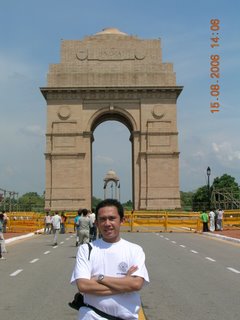Urban Drainage Planning
Synopsis of My Seminar: URBAN DRAINAGE PLANNING
The rainfall-runoff process in an undeveloped area is primarily determined by the natural surface detention, infiltration characteristics, and the drainage pattern formed by the natural flow paths. The type of the surface soil, the nature of vegetative cover, and the topography are the governing factors. The natural rainfall-runoff process is altered in urbanizing areas. Part of the land surface is covered by impervious material due to urbanization. The water courses are cleared, deepened, and straightened to improve their conveyance capacities.
New man-made drainage facilities are added to the drainage system. A typical urban land cover consisting of impervious rooftops, streets, and parking lots allows far less surface retention and infiltration than an undeveloped land. Moreover, stormwater runoff occurs over smooth, impervious surfaces, and in man-made or improved natural channels with increased velocity. As a result of these factors, urbanization increases the stormwater runoff volumes and rates, and possibly causes flooding of downstream areas. It can also accentuate downstream channel erosion.
In response to these critical problems, engineers and scientists have developed many innovative techniques to analyze urban hydrology. They have also designed many innovative structures to control urban flooding and improve stormwater quality. These analysis techniques and design structures rely heavily on numerical methods and computer models. Thus, desktop methods and empirical models are giving way to new, physically based techniques that are embedded in modern computer software.
Storm Water Management Model (SWMM) is a rainfall runoff simulation model which can be used for single event or long-term (continuous) simulation of runoff quantity and quality from primarily urban areas. Computer based Storm Water Management Model (SWMM) can be used in several practical applications. This study provides an understanding of urban hydrology, i.e. how to plan urban drainage. The latest version of SWMM 5 software developed by US EPA has been studied and applied an various illustrative examples.
Posted by: JRP






0 comments:
Post a Comment